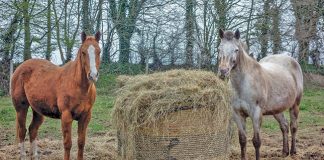In South Africa, horse riding is sometimes seen as an elitist sport introduced from Europe, yet North Africans were noted horse riders thousands of years ago and their horses remain a valued cultural resource. In fact, new archaeological evidence suggests that horses were domesticated and ridden in northern and western Africa long before the Ancient Egyptians harnessed them to their war chariots.
The Tuareg, for example, are an ancient Berber tribe who ride horses and camels and practise nomadic pastoralism with sheep, goats and cattle in the Sahara.

Brass statuette of a Tuareg rider, showing the typical saddle and stirrups. The short javelin held by the rider is used for hunting.
According to legend, Tin Hinan, Queen of Hoggar, united several tribes to form the Tuareg in about 450AD. The men are responsible for looking after the livestock, while the women care for the family.
Clinging to an ancient way of life in the desert
Between 1900 and 1917, the Tuaregs resisted French colonialism, but their broadswords were no match for modern weapons. The traditional Tuareg territory in the Sahara and Sahel was divided up between Niger, Mali, Algeria, Libya and Burkina Faso. Sadly, the recent civil war in Mali has affected the Tuaregs badly and many have become refugees.
Tuareg pastoralists still roam the Saharan parts of Niger, Mali and Algeria, their livestock grazing different areas at different times of the year. Small groups have also settled as farmers in Algeria, Libya , Burkina Faso and Nigeria.
Where riding skills are revered
When I visited Côte d’Ivoire about five years ago, I bought the brass statue seen here. The Tuareg family I met were superb riders. The youngsters were schooling young horses bareback along the grass in the centre of the motorway, racing the speeding trucks and cars!
When I stopped at their camp to talk to them, I saw that the horses were lean, but healthy and in good condition. Farriery is a traditional skill and the hooves of all the horses were well balanced. The stallions were tethered next to the mares, but were docile and obedient.
The horses are not tall, but wiry and strong.
They do not show the low-set tail and convex profile of the Berber horses seen in Morocco or the exaggerated concave profile, flaring nostrils and high set tail of the Arabian. Most are fine-boned with a straight profile and fairly long heads.
Links between horses in Africa and elsewhere
Recent genetic studies on north and west African horses have shown a relationship with the horses of the Middle East
as well as those of the Iberian Peninsula and the Far East. Researchers suggest this is because they were cavalry horses used for war. When invading enemies were beaten, their horses were added to the national herd.
The saddles have a very high pommel and cantle with large, wide stirrups. The traditional bridle lacks a noseband and is decorated with many fronds and tassels to protect the eyes and nostrils from flies.
We know that zebra and donkeys are indigenous to Africa. To my mind, the realisation that horses have been domesticated and ridden here for at least 9 000 years, far earlier than they were in Europe, is quite remarkable.













